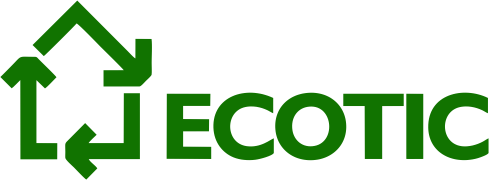In order to keep a fluency of the series How to recycle electrical and electronic equipment, we decided this article to be about the complementary device of the monitor, the central processing unit. Why? We are in an dynamic  world in which the use of the mobile gadgets is more and more common. Nowadays, the whole system of a central processing unit is replaced by small parts that can be found in various gadgets, from laptops to tablets. Once these are known, question arises: What happens wit CPU once it worns out? We are European citizens and we are knowledgeable of the legal obligation to collect waste selectively, and therefore we should hand over the CPU to a designated collection point (here you can find all collection points in the ECOTIC system) .
world in which the use of the mobile gadgets is more and more common. Nowadays, the whole system of a central processing unit is replaced by small parts that can be found in various gadgets, from laptops to tablets. Once these are known, question arises: What happens wit CPU once it worns out? We are European citizens and we are knowledgeable of the legal obligation to collect waste selectively, and therefore we should hand over the CPU to a designated collection point (here you can find all collection points in the ECOTIC system) .
Why do we recycle the CPU’s? The CPU’s are part of the electronic waste that is characterized mainly by its content of elements and chemical compounds with high economic value. In parallel with this feature that shouldn’t be neglected, the recovery of elements and of toxic compounds involves complex technological processes having pollutant potential.
Recycling processes of waste electrical and electronic equipment (WEEE) are governed by these distinct elements:
:

In the following table some of the chemical elements with high pollutant potential are listed:
|
Chemical element |
CPU component |
Negative effects |
|
Compusi halogenati: |
||
|
Capacitors, transformers |
1) serious impact on health and the environment, including carcinogenicity, reproductive disorders, immune system changes, loss of biological diversity generally slow-growing effects. |
|
Flame retardants in plastics |
|
|
Printed circuits |
1) effects on the nervous system but also on the skin |
|
Cases |
1) effects on reproductive system |
|
Electrical insulators |
1)through incineration are released dioxins and furans – highly toxic to the human body. |
|
Metale grele/Alte metale: |
||
|
Diode |
|
|
Power sources |
|
|
FDD |
1)cause allergic reactions |
|
batteries, printed circuit boards |
1) severe effects on plants, animals and microorganisms |
|
batteries, printed circuit boards |
1) affects the human body, especially the kidneys |
|
batteries, printed circuit boards |
1) negative effects on brain development |
In terms of the economic impact that recycling waste of electric and electronic equipment have, the CPU are known to be one of the most valuable waste category.
In 2013, in the ECOTIC system were processed 641.04 tons of CPU, representing 79 590 pieces of such equipment.
From 10 tons of central units after dismantling process, the following types and amounts of fractions rezult: iron 5959.7 kg, 1860 kg electrical components, 910.9 kg unsorted plastic , 749.2 kg PCB (motherboards), 258.8 kg aluminum wiring 182.3 kg, 53.5 kg of batteries, 14.2 kg copper, 11.4 kg capacitor> 25mm.
From 749.2 kg of motherboards are extracted 160 kg copper 121 gr. Silver, 56.6 gr. Gold, 30 gr. Palladium, 13 kg Zinc, 10.8 gr. Platinum, 4 kg aluminum (these were identified in the study conducted by Green Electronics in 2011, “Overview of hydrometallurgical process for the recovery of copper from waste printed circuit boards“).
The stages through which a CPU passes in the recycling processes:
1.DEPOLLUTION – dangerous elements are extracted :
– Electrolytic capacitors
– Batteries
– Printed circuit boards
– Plastics with brominated compounds
– External cables
2.TREATMENT – the elements and subassemblies without dangerous content are removed:
– Metals
– Cables
– Plastic materials
Etc.


 3.CAPITALIZATION – components and the materials extracted are subject to the final recovery, in order to be integrate into the economic circuit. Here you can see the in what are transformed the elements
3.CAPITALIZATION – components and the materials extracted are subject to the final recovery, in order to be integrate into the economic circuit. Here you can see the in what are transformed the elements
The recovery of the materials and components present in the electronic devices , particularly those present in the IT & C equipment is a priority at EU level in order to reduce the dependence on imported raw materials underlying the production sectors of the electronic equipment field.
The photos were made with the support of GreenWeee International.
